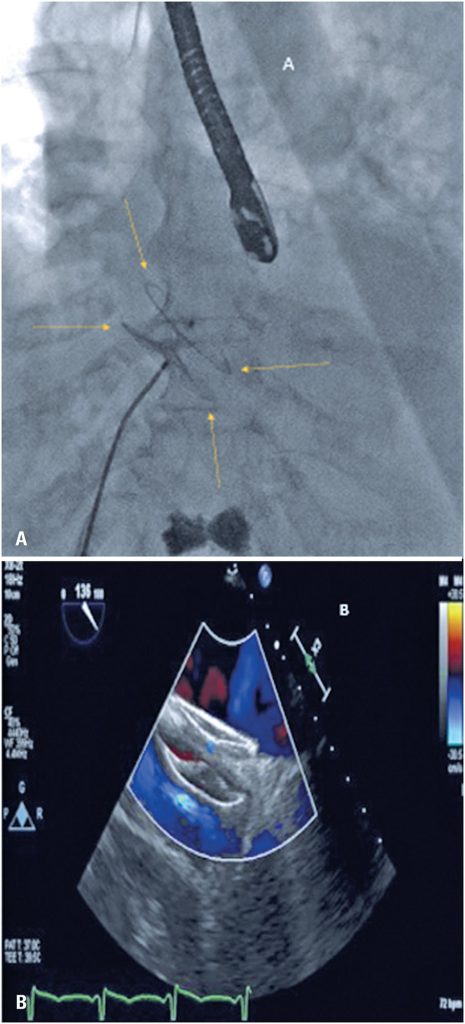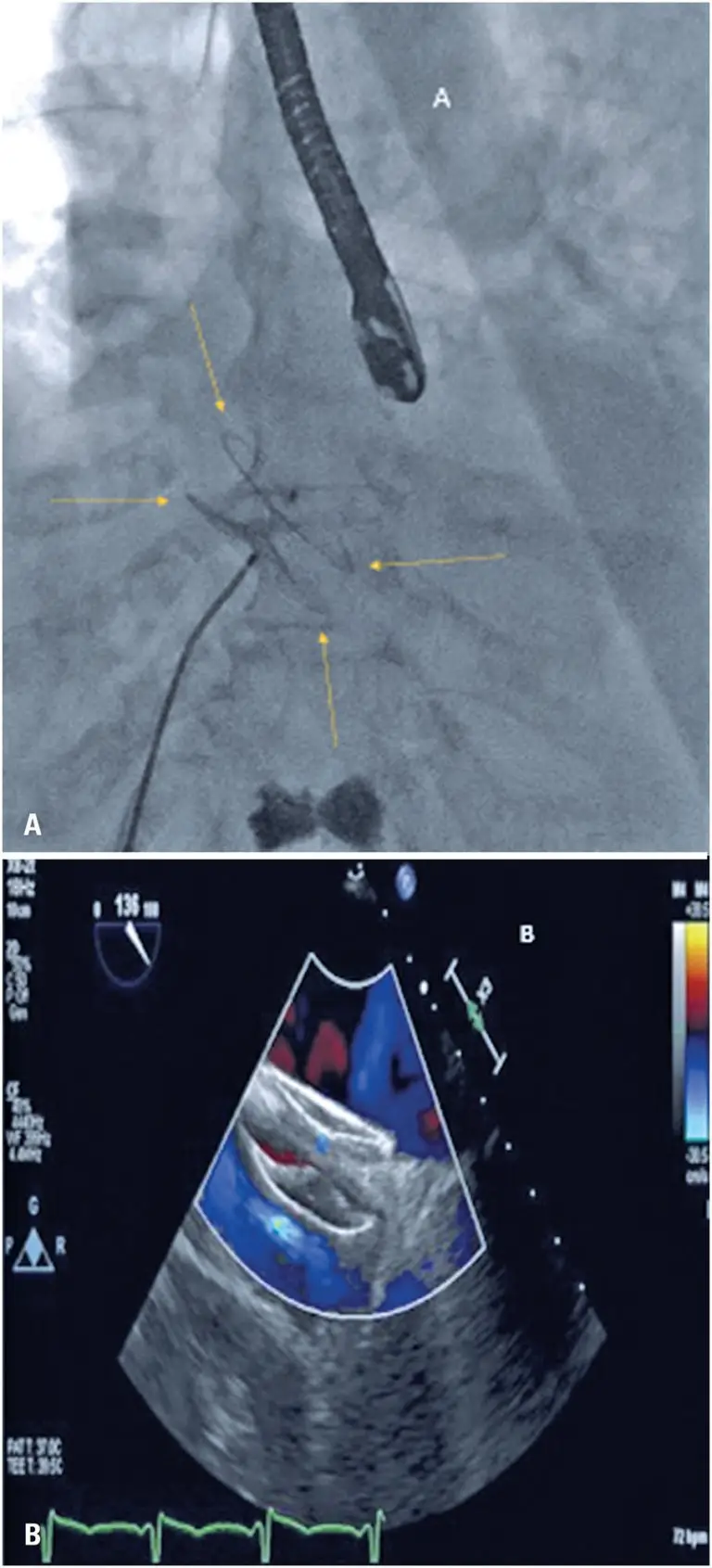einstein (São Paulo). 03/Oct/2025;23:eRC1568.
Platypnea-orthodeoxia syndrome: echocardiography-guided percutaneous treatment
DOI: 10.31744/einstein_journal/2025RC1568
ABSTRACT
Platypnea-orthodeoxia syndrome, first described in 1949, is a rare clinical condition characterized by positional dyspnea and oxygen desaturation in the upright position that improves when lying down. Herein, we report the case of an 86-year-old patient who experienced episodes of dyspnea on assuming an upright position, which limited her daily activities. The patient’s oxygen saturation was 82% in the standing position and 91% in the supine position. During diagnostic investigation, a patent foramen ovale was identified using transesophageal echocardiography. The patient underwent percutaneous patent foramen ovale closure with an Amplatzer device, which resulted in significant improvement in her symptoms and oxygen saturation. Diagnosis of this condition requires a high index of clinical suspicion and is confirmed when the syndrome’s signs and symptoms correlate with the presence of a right-to-left interatrial shunt. It is predominantly diagnosed using echocardiography with agitated saline injection.
53



